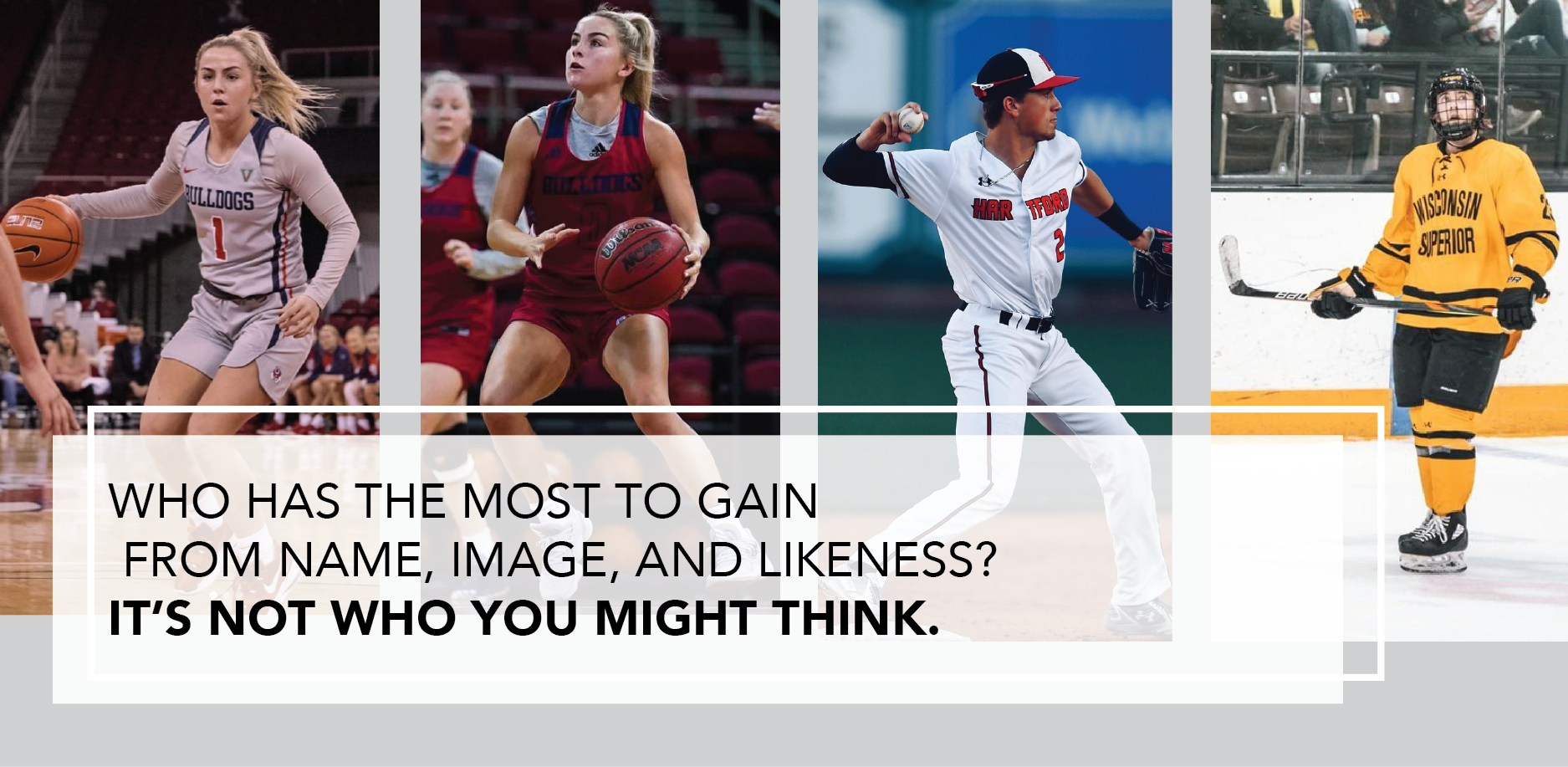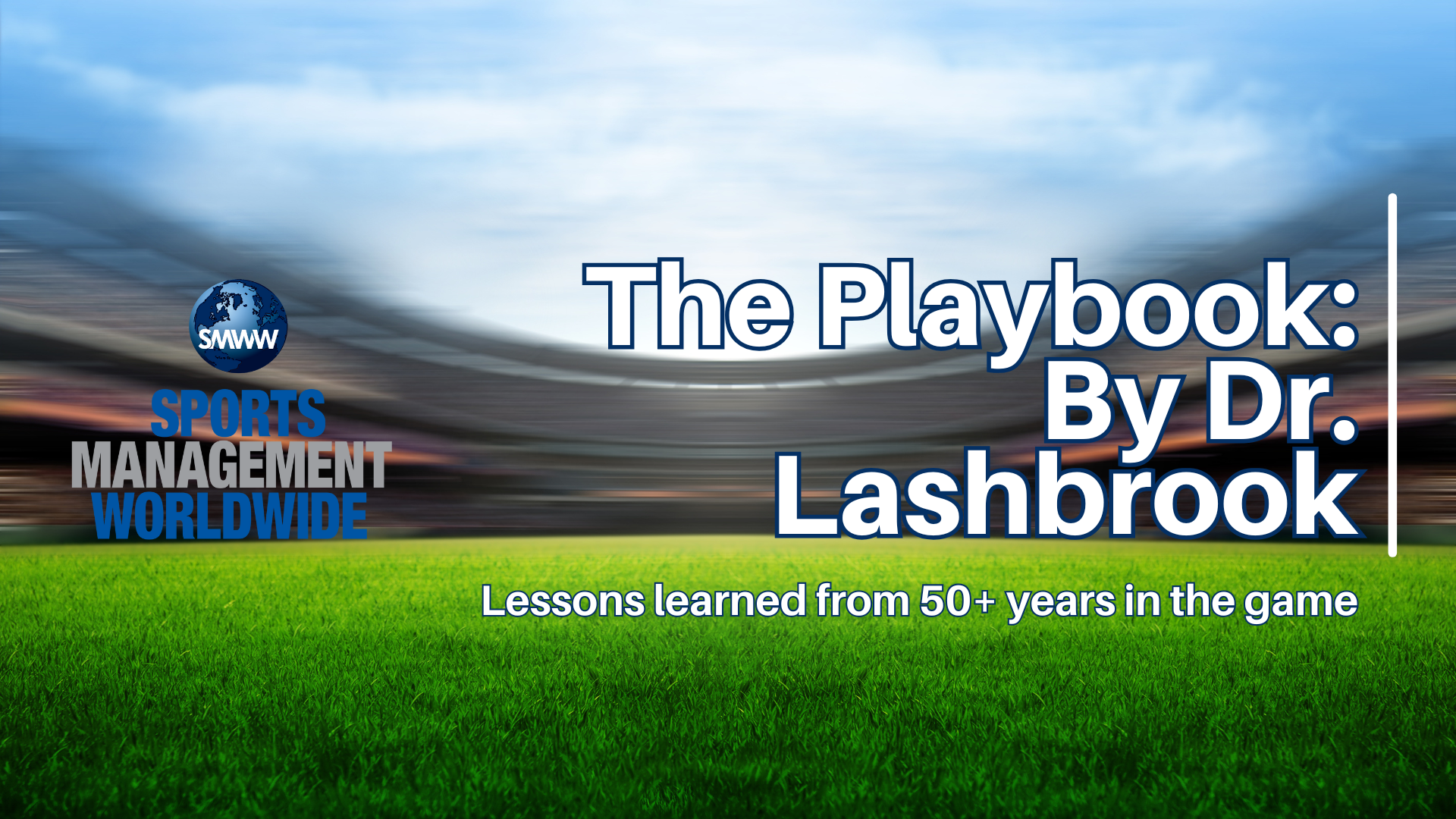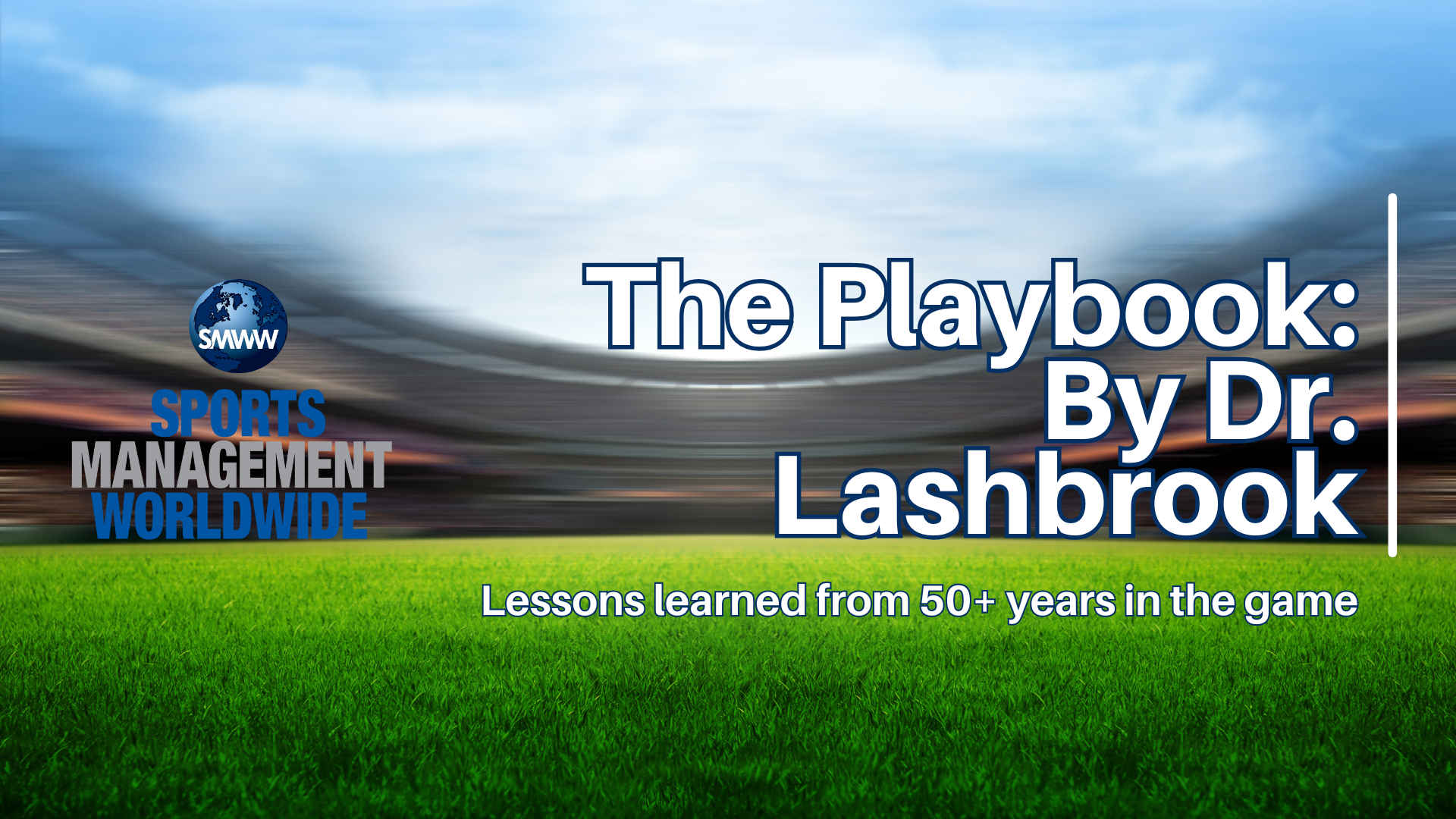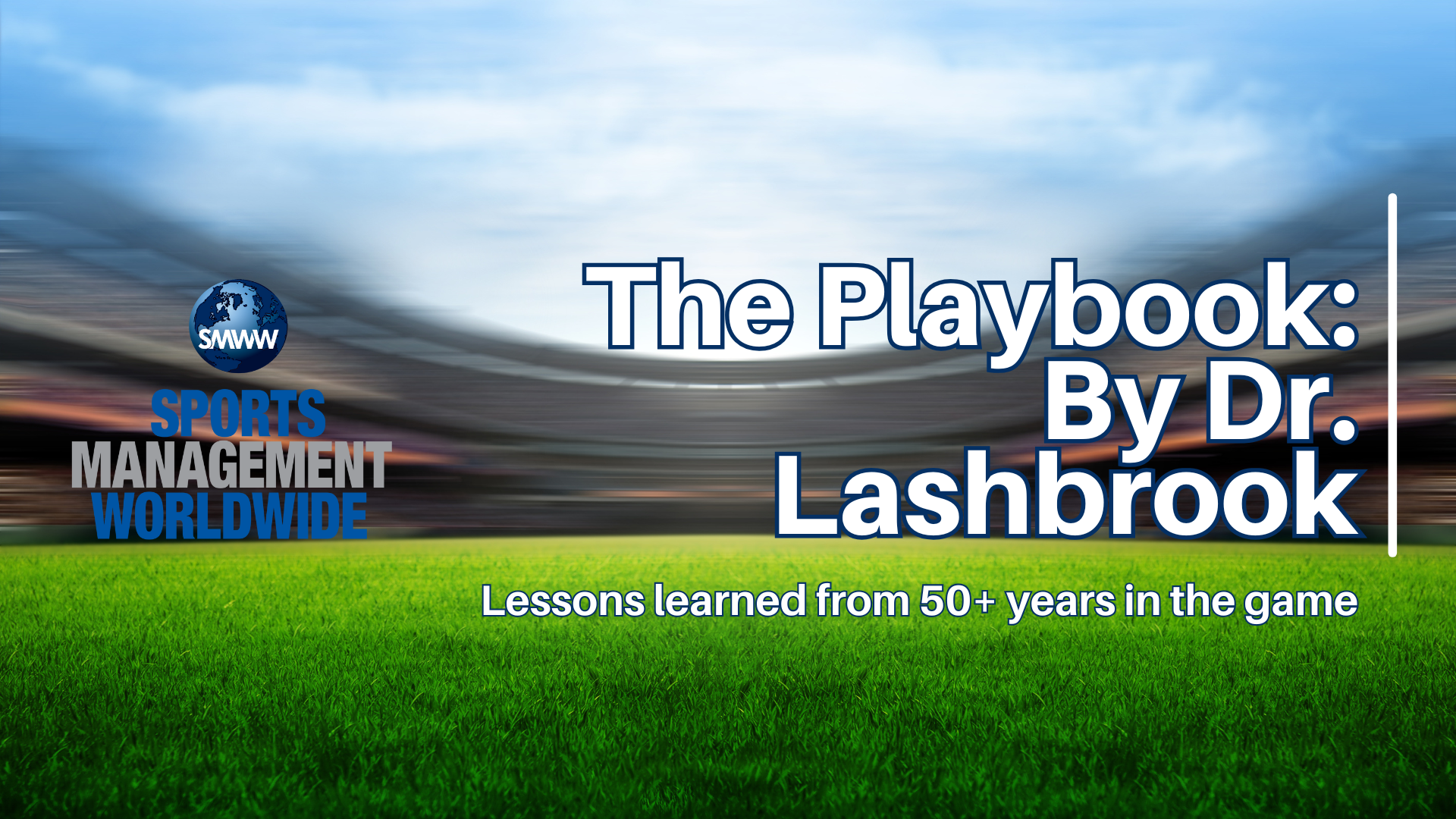
Who Has the Most to Gain From Name, Image, and Likeness? It's Not Who You Might Think
December 01, 2020
by
Put yourself in the shoes of a college athlete and picture this: you wake up, go to practice, hang out with your teammates, get a lift in, do some studying, have dinner as a team, and go to sleep knowing that you’ll wake up and do the same thing again tomorrow. Your routine is always the same, except one day you choose to record everything. You compile your footage and post the highlights thinking nothing of it, but you wake up to thousands of views, comments, and likes of people newly interested and invested in your life. From there, you continue to post videos with the same content and follow new trends, gaining more and more followers with each post. All of a sudden, without even trying, you have created a name and image, and likeness for yourself through social media.
For many athletes, especially collegiate athletes, this is the reality of posting on social media. With the emergence of TikTok, as the newly dominant social media platform, many student-athletes have used it to develop a stronger social media presence. What does this mean for student-athletes from all levels and divisions? They now have a new tool in their arsenal to create and monetize opportunities for themselves off of their Name, Image, and Likeness (NIL) without breaking their NCAA contracts.
In the past year, many student-athletes have developed their NIL through a social media presence on multiple platforms, including TikTok, as one of their main sources. Content posted ranges anywhere from “a day in the life of a student-athlete”, to locker room pranks, and keeping up with current dance trends. Followers end up falling in love with these athletes and their posts despite the level of competition, or the sport that they play. What drives this level of interest? The keys to their success lie in part to them pulling back the Wizard of Oz-like curtain on what a student-athlete’s life is like. Additionally, there is a key difference between collegiate athletes and professional athletes. Passion. The passion for college sports and college athletes runs much deeper and is unwavering compared to professional sports. No matter who is on the field for a college team, if you’re in the uniform, you’re in the hearts of every fan of that school. Professional athletes come and go on teams, new rookies come in, and the chance of falling out with a fanbase is high. College athletes can and do use that passion for them in creating their name, image, and likeness, it’s probably the most useful tool for them beyond their on-field performance. Just like businesses have to gauge the demographics of a student-athletes audience, student-athletes must understand the position and power they hold in representing their school, no matter how big or small.
However, an even bigger question is what does this mean for those athletes that are not constantly in the public eye? For an athlete like Trevor Lawrence, Quarterback for the Clemson Tigers, building a name and image for himself happened naturally with his success on the football field. Playing football for one of the most notorious Division I schools in the nation is an “easy” way to make a name for yourself, but not every student-athlete is like Trevor Lawrence, and not every school is like Clemson. In this scenario, we are talking about the college athletes that don’t get the same media coverage from the largest platforms; such as Division II and III universities, and lower attended sports.
Lawson McDonald, a Division III hockey player from the University of Nebraska-Omaha, has become so popular on TikTok that he now has more social media engagement (total views) than the NHL’s TikTok page. When analyzing McDonald’s most recent 20 videos to those of the NHL, McDonald’s posts averaged 283.7k views while the NHL averaged 128.6k. His most popular post, featuring McDonald and a few of his teammates, reached over 23.7 million views! Not to mention, McDonald has over 144k followers which are a little over one-tenth of the followers the NHL has. He has now developed another TikTok page and Youtube channel with teammates called the “Hockey Guys” that is beginning to experience the same success his individual accounts are. Think of Lawson’s potential to turn those views and followers into a revenue stream for himself. What would you value you that at? $1,000? $10,000? More?
Let’s talk about value and put some context on these numbers. Lawson McDonald has 144k followers, but how does he, or his agent, know how much those followers are worth? According to research shared by AJ Maestas and Jason Belzer of AthleticDirectorU.com, the potential revenue for these student-athletes on Instagram can be calculated as (Instagram followers x $0.80 endorsement value). So, for Lawson and his agent, 144k followers x $0.80 per follower would equate to $115,200 in value. Or rather, potential value. From an agent standpoint, you must realize that not every company will value followers the same based on the audience that those followers are composed of. This formula makes Lawson’s followers worth $115,200, but a company may only pay Lawson $5,000 because they only see a portion of Lawson’s followers as the demographic they are looking to target. An agent is responsible for getting their client the best deal possible, so understanding the value of your client’s name, image, and likeness is critical in negotiations as well as what is the demographics of your client’s audience.
What does this mean for an SMWW Agent Advisor or SMWW Alumni? Let’s say an Agent Advisor would make 10% commission for endorsement deals, which is an industry average. If a student-athlete had 50k followers, meaning their potential revenue would be $40,000 (50k x $.80), the agent could make $4,000 off of one individual athlete’s NIL. Earning $4,000 off one deal sounds like a dream come true. Well, that dream is now becoming a reality with NIL soon becoming legal across the U.S. Think about the potential you have to make a business out of working with student-athletes in monetizing their name, image, and likeness. What will you do to help a student-athlete with their NIL and how can you make yourself stand out from other agents looking to do the same?
Another athlete who has found success on social media and made the decision to monetize the opportunity in his own way is Stetson University baseball player, Jackson Olson. With just over 131k followers on TikTok, his posts have received more engagement than posts by the Chicago Cubs. His humorous videos, baseball tricks, and ability to keep up with challenges and trends have given him the opportunity to develop his own brand. Olson has grown that brand to include a variety of merchandise with the name, “Don’t Be Afraid 2BU.” Followers are able to find his website along with links to his other social media accounts (Instagram, Twitter, Snapchat, TikTok, and Youtube) through his Linktree, a URL that makes his accounts more accessible and expands his social media presence. Jackson’s followers have a potential value of $104,800 and his brand has a whole adds onto that; an apparel line plus multiple social media platforms have set Jackson up for success in the NIL market and leaves an opportunity for an Agent Advisor or Athlete Marketing and Branding graduate to help grow that brand for Jackson and profit from it.
As for women’s sports, Division I Fresno State basketball players Haley and Hanna Cavinder have built an extremely strong social media presence on multiple platforms such as TikTok, Youtube, and Instagram. Their content ranges from dance videos to a typical day as a collegiate athlete, all kinds of posts receiving high engagement. They currently have over 2.2 million followers on TikTok with an average of 656.4k views over their last twenty videos! On Instagram, they are both verified with over 146k followers, which means they have been confirmed as public figures. With the endorsement equation to calculate potential revenue, each of these athletes could make an annual $116,800 from Instagram alone. With such a strong fan base as well, they have created a YouTube channel with dedicated subscribers anxious for their next vlog, competition, or highlight video.
Although we only provided four examples, there are thousands of student-athletes posting the same sort of content in an attempt to build their own NIL. According to Blake Lawrence, CEO of OpenDorse.com, who interviewed some big-time agents, claimed those agents would only recruit 3-4 players from a large school like Clemson for NIL deals. When looking at the student-athlete population as a whole, this means that the vast majority of athletes won’t be recruited by large agencies for NIL deals. Which begs the question, who will? Will you? For athletes like the ones mentioned and others whose names aren’t in the top sports headlines weekly, social media is paving the road to monetizing their name, image, and likeness.
With the vast majority of student-athletes active across all social media platforms, the opportunity to monetize their presence is huge. So what does this mean for you? At SMWW, our Athlete Marketing and Branding Course, as well as our Athlete Management Course, will teach students about NIL, endorsement deals, and sponsorship deals for athletes. Our graduates and Agent Advisors can work with student-athletes, to not only expand their social media presence but to monetize their NIL. The Agent Advisor program will allow our advisors to work with athletes with smaller social media accounts and help them expand their presence and monetize off of it. SMWW is here to help you set yourself up for success and to turn your passion into a career.










